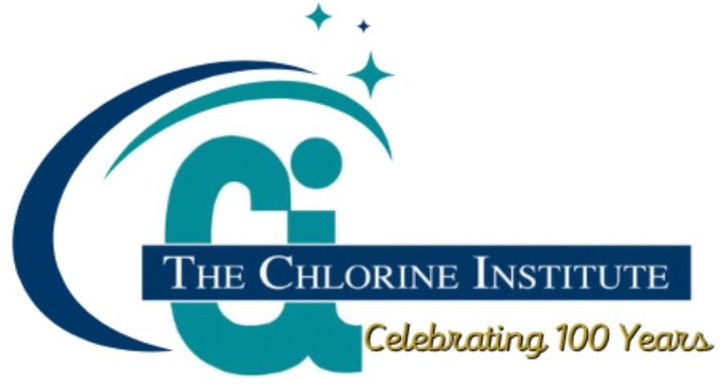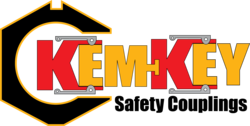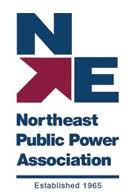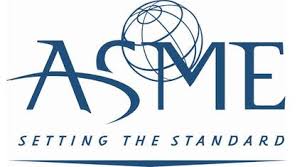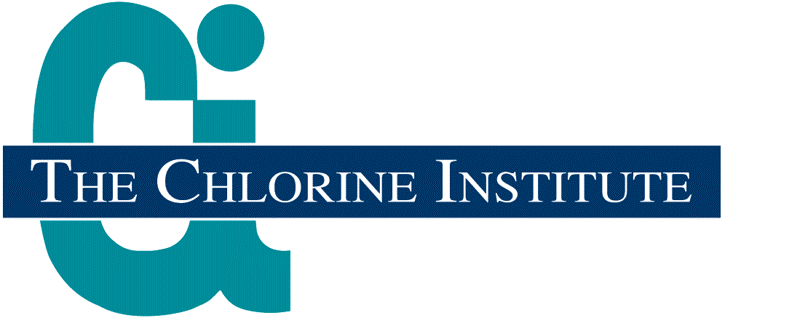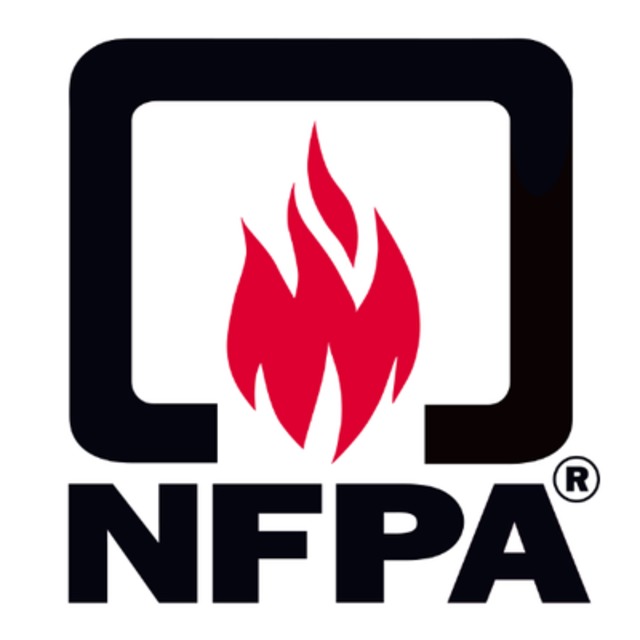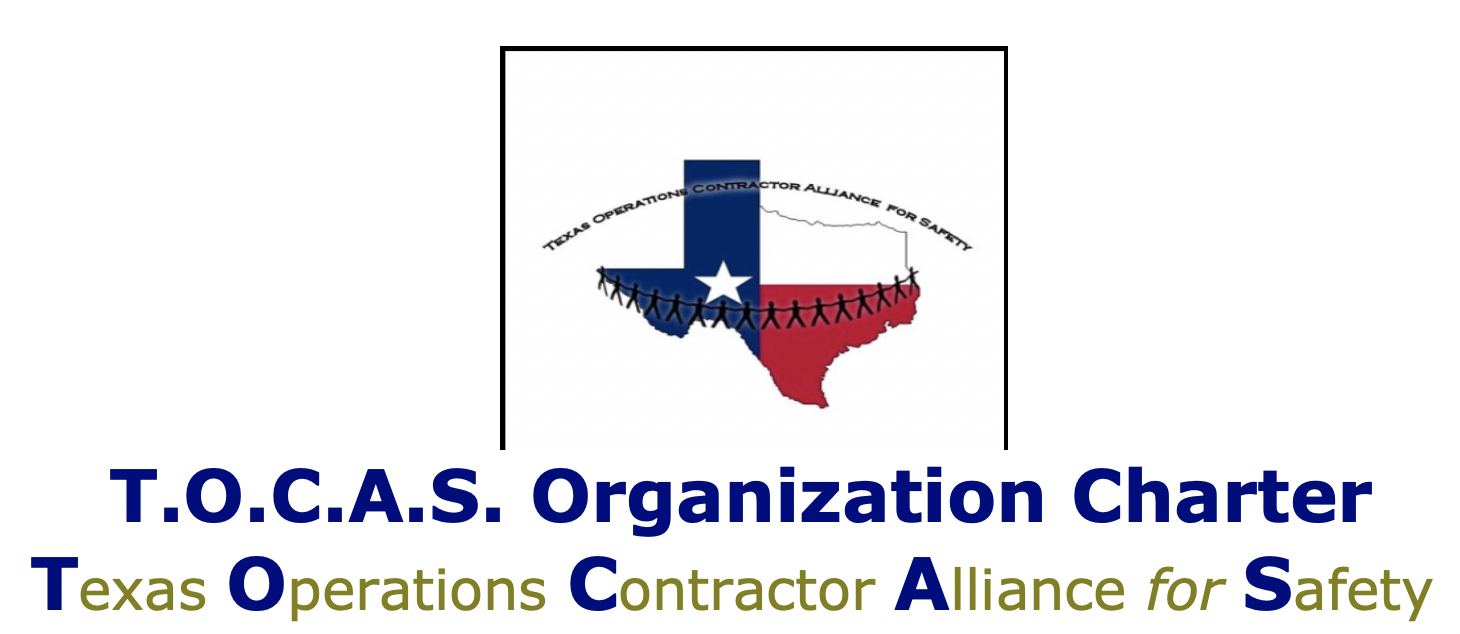The operators of a global ink and coatings manufacturing company could have prevented an employee from suffering burn injuries from a flash fire that erupted in an industrial mixing vessel containing flammable liquids and vapors by following federal regulations for handling of highly hazardous chemicals. An OSHA investigation determined a flash fire sparked in the mixing vessel as the employee manually added combustible powder ingredients. Inspectors found the flames exited the vessel’s charging port and caused the employee to sustain first and second-degree burns in January 2024.
OSHA investigators cited the facility for multiple violations of Process Safety Management requirements related to the safe handling of highly hazardous chemicals, including flammable liquids. They also found the company failed to provide employees with effective training on the hazards of flammable liquids and combustible dust and exposed workers to fall hazards.
Citation 1 Item 1
Type of Violation: Serious; $12,676
29 CFR 1910.28(b)(6)(i): Dangerous Equipment. The employer must ensure that each employee less than 4 feet (1.2 m) above dangerous equipment is protected from falling into or onto the dangerous equipment by a guardrail system or a travel restraint system, unless the equipment is covered or guarded to eliminate the hazard.
(a) On or about December 26, 2023, through January 3, 2024, the employer did not ensure that each employee performing work on the blending vessel mezzanine was protected from falling into mixing vessel KD-3 (Bruce) while adding materials or performing other work tasks on the mixing/blending mezzanine with the hinged lid open.
(b) On or about December 26, 2023, through January 3, 2024, the employer did not ensure that each employee performing work on the blending vessel mezzanine was protected from falling into mixing vessel KD-4 while adding materials or performing other work tasks on the mixing/blending mezzanine with the hinged lid open.
Citation 1 Item 2
Type of Violation: Serious; $12,676
29 CFR 1910.106(d)(4)(i): Construction. Inside storage rooms shall be constructed to meet the required fire- resistive rating for their use. Such construction shall comply with the test specifications set forth in Standard Methods of Fire Tests of Building Construction and Materials, NFPA 251-1969. Where an automatic sprinkler system is provided, the system shall be designed and installed in an acceptable manner. Openings to other rooms or buildings shall be provided with noncombustible liquid-tight raised sills or ramps at least 4 inches in height, or the floor in the storage area shall be at least 4 inches below the surrounding floor. Openings shall be provided with approved self-closing fire doors. The room shall be liquid-tight where the walls join the floor. A permissible alternate to the sill or ramp is an open-grated trench inside of the room which drains to a safe location.
(a) On or about February 7, 2024, the Class I Division 2 storage room was not constructed to meet the required fire resistive rating for use. The storage room was not at least 4 inches below surrounding floor and had with no sills or ramps at openings to other rooms (or constructed with permissible alternate techniques), walls were not liquid tight, and the fire doors did not meet NFPA 80 requirements (unapproved).
The alleged violations below have been grouped because they involve similar or related hazards that may increase the potential for injury or illness.
Citation 1 Item 3a
Type of Violation: Serious; $12,676
29 CFR 1910.106(d)(5)(ii): Containers. The storage of flammable liquids in containers or portable tanks shall comply with subdivisions (iii) through (v) of 29 CFR 1910.106(d)(5)(ii).
(a) On or about January 3, 2024, the pile/rack on Rack K in the Class I Division 1 manufacturing area had approximately 4,080 gallons of flammable liquids which was over the allowable amount(s) listed in Table H-14 - Indoor Container Storage, for unprotected storage of Category 2 flammable liquids.
Citation 1 Item 3b
Type of Violation: Serious
29 CFR 1910.106(d)(5)(v): General Purpose Public Warehouse. Storage shall be in accordance with Table H-14 and H-15 and in buildings or in portions of such buildings cut off by standard firewalls.
(a) On or about January 3, 2024, the pile/rack on Rack K in the Class I Division 1 manufacturing area had approximately 4,080 gallons of flammable liquids which was over the allowable amount(s) listed in Table H-14 - Indoor Container Storage, for unprotected storage of Category 2 flammable liquids.
The alleged violations below have been grouped because they involve similar or related hazards that may increase the potential for injury or illness.
Citation 1 Item 4a
Type of Violation: Serious; $16,131
29 CFR 1910.106(e)(6)(i): General. Adequate precautions shall be taken to prevent the ignition of flammable vapors. Sources of ignition include but are not limited to open flames; lightning; smoking; cutting and welding; hot surfaces; frictional heat; static, electrical, and mechanical sparks; spontaneous ignition, including heat-producing chemical reactions; and radiant heat.
(a) On or about December 26, 2023, and through January 3, 2024, the employer had not ensured that condition of static spark discharge from human and conductive process equipment interactions, such as the opening of the mixing vessels in the Class I Division 1 manufacturing area containing flammable liquids and their vapors (such as but not limited to vessels KD-5 and CT-1) to add particulate solid additives, was controlled or protected for by ensuring that employees interacting with the mixing vessels were bonded to the system and grounded through means of personnel bonding and grounding (i.e., wrist straps or static dissipative footwear with engineered, conductive flooring systems). This condition exposed employees to explosion, deflagration, flash fire, and/or fire hazards associated with the ignition of flammable vapors from static sparks between employees and the process equipment.
(b) On or about December 26, 2023, and through January 3, 2024, the employer had not ensured that the combustible particulate solid additives charging processes associated with mixing vessels in the Class I Division 1 manufacturing area processing flammable liquids and combustible particulate solids (such as but not limited to vessels KD-5 and CT-1) were protected from a static spark ignition source in that the employer allowed direct, manual dump charging of combustible particulate solid additives into the vessels' lid openings from bags which is a recognized source of potential ignition. This condition exposed employees to explosion, deflagration, flash fire, and/or fire hazards associated with the ignition of flammable vapors from static sparks from the falling particulate materials.
(c) On or about December 26, 2023, and through January 3, 2024, the employer had not ensured that mixing vessels in the Class I Division 1 manufacturing area processing flammable liquids and combustible particulate solids (such as but not limited to vessels KD-5 and CT-1) were protected from a static spark ignition source in that the flexible hoses were used as branch ducts to connect the vessels to the ventilation system's main duct. The branch ducts were made of non-conductive material (plastic) and the internal stiffening wires were not bonded and grounded to the system which is a recognized source of potential ignition. This condition exposed employees to explosion, deflagration, flash fire, and/or fire hazards associated with the ignition of flammable vapors from static sparks from isolated conductors.
Citation 1 Item 4b
Type of Violation: Serious
29 CFR 1910.136(a): General requirements. The employer shall ensure that each affected employee uses protective footwear when working in areas where there is a danger of foot injuries due to falling or rolling objects, or objects piercing the sole, or when the use of protective footwear will protect the affected employee from an electrical hazard, such as a static-discharge or electric-shock hazard, that remains after the employer takes other necessary protective measures.
(a) On or about December 26, 2023, and through January 3, 2024, the employer had not ensured that the condition of static spark discharge from human and conductive process equipment interactions, such as the opening of mixing vessels in the Class I Division 1 manufacturing are containing flammable liquids and their vapors (such as but not limited to vessels KD-5 and CT-1) to add particulate solid additives, was controlled or protected for by ensuring that employees interacting with the mixing vessels were bonded and grounded through the use of static dissipative footwear integrated with engineered, conductive flooring systems. This condition exposed employees to explosion, deflagration, flash fire, and/or fire hazards associated with the ignition of flammable vapor from static sparks between employees and the processing equipment.
The alleged violations below have been grouped because they involve similar or related hazards that may increase the potential for injury or illness.
Citation 1 Item 5a
Type of Violation: Serious; $16,131
29 CFR 1910.119(d)(1): Information pertaining to the hazards of the highly hazardous chemicals in the process. This information shall consist of at least the elements specified in 29 CFR 1910.119 (d)(1)(i) through (vii).
(a) On or about December 26, 2023, and through January 3, 2024, the employer had not developed process safety information (PSI) required by the standard, including information pertaining to the hazards of the highly hazardous chemicals in the process, for the solvent-based inks manufacturing process within the Class I Division 1 manufacturing area producing flammable liquid inks with flash points below 100 F and in quantities over 10,000 lbs. The covered process includes all processing equipment and flammable materials associated with mixing vessels CT-1, KD-5, KD-2, KD-3, KD-4, and CT-6 located within the Class I Division 1 manufacturing area, as well as the ventilation system's dust collector located just outside of the Class I Division 1 manufacturing area.
Note: Information pertaining to the hazards of the highly hazardous chemicals in the process is to include:
(i) toxicity information; (ii) permissible exposure limits; (iii) physical data; (iv) reactivity data; (v) corrosivity data; (vi) thermal and chemical stability data; and (vii) hazardous effects of inadvertent mixing of different materials that could foreseeably occur.
Citation 1 Item 5b
Type of Violation: Serious
29 CFR 1910.119(d)(2)(i): Information pertaining to the technology of the process shall include at least the elements specified in 29 CFR 1910.119(d)(2)(i)(A) through (E).
(a) On or about December 26, 2023, and through January 3, 2024, the employer had not developed process safety information required by the standard, including information pertaining to the technology of the process, for the solvent-based inks manufacturing process within the Class I Division 1 manufacturing area producing flammable liquid inks with flash points below 100 F and in quantities over 10,000 lbs. The covered process includes all processing equipment and flammable materials associated with mixing vessels CT-1, KD-5, KD-2, KD-3, KD-4, and CT-6 located within the Class I Division 1 manufacturing area, as well as the ventilation system's dust collector located just outside of the Class I Division 1 manufacturing area.
Note: Information pertaining to the technology of the process is to include at least the following: (A) a block flow diagram or simplified process flow diagram; (B) process chemistry; (C) maximum intended inventory; (D) safe upper and lower limits for such items as temperatures, pressures, flows or compositions; an evaluation of the consequence of deviations, including those affecting the safety and health of employees.
Citation 1 Item 5c
Type of Violation: Serious
29 CFR 1910.119(d)(3)(i): Information pertaining to the equipment in the process shall include the elements specified in 29 CFR 1910.119(d)(3)(i)(A) through (H).
(a) On or about December 26, 2023, and through January 3, 2024, the employer had not developed process safety information required by the standard, including the information pertaining to the equipment in the process, for the solvent-based inks manufacturing process within the Class I Division 1 manufacturing area producing flammable liquid inks with flash points below 100 F and in quantities over 10,000 lbs. The covered process includes all processing equipment and flammable materials associated with mixing vessels CT-1, KD-5, KD-2, KD-3, KD-4, and CT-6 located within the Class I Division 1 manufacturing area, as well as the ventilation system's dust collector located just outside of the Class I Division 1 manufacturing area.
Note: Information pertaining to the technology of the equipment in the process is to include: (A) materials of construction; (B) piping and instrument diagrams (P&ID's); (C) electrical classification; (D) relief system design and design basis; (E) ventilation system design; (F) design codes and standards employed; (G) material and energy balances; and (H) safety systems (e.g. interlocks, detection or suppression systems).
Citation 1 Item 6
Type of Violation: Serious; $16,131
29 CFR 1910.119(d)(3)(ii): The employer shall document that equipment complies with recognized and generally accepted good engineering practices.
(a) On or about December 26, 2023, and through January 3, 2024, the employer had not documented, under required process safety information, that the equipment associated with the solvent-based inks manufacturing process within the Class I Division 1 manufacturing area producing flammable liquid inks with flash points below 100 F and in quantities over 10,000 lbs. complied with recognized and generally accepted good engineering practices (RAGAGEPs) for instances such as but not limited to those listed below:
(i) The employer did not document that the ventilation system's explosion protection system installed on the dust collector servicing covered mixing vessels CT-1, KD-5, KD-2, KD-3, KD-4, and CT-6 complied with RAGAGEP. The outdoor Donaldson Torit dry-type cartridge collector was used to convey flammable vapors and combustible dusts from the process vessels. The dust collector's explosion protection design (explosion venting) was based solely on explosibility properties of combustible paint pigment particulate solids and not on hybrid mixtures, including flammable vapors. National Fire Protection Association (NFPA) Standard 91 "Standard for Exhaust Systems for Air Conveying of Vapors, Gases, Mists, and Particulate Solids, 2020 ed." stipulates that the concentration of flammable vapors or gases shall not exceed 25 percent of the lower flammable limit (LFL) unless designed and protected in accordance with NFPA 68 "Standard on Explosion Protection by Deflagration Venting, 2018 ed.". NFPA 68 requires that the design of explosion protection venting systems handling flammable gases and/or hybrid mixtures be designed with the properties of the flammable gases and/or hybrid mixtures in mind.
(ii) The employer did not document that the ventilation system's fan system installed on the dust collector servicing covered mixing vessels CT-1, KD-5, KD-2, KD-3, KD-4, and CT-6 complied with RAGAGEP. The outdoor Donaldson Torit type cartridge collector was used to convey flammable vapors and combustible dusts from the process vessels. The dust collector's fan was not designed with industry recognized spark-resistant construction principles. National Fire Protection Association (NFPA) Standard 91 "Standard for Exhaust Systems for Air Conveying of Vapors, Gases, Mists, and Particulate Solids, 2020 ed." stipulates that air-moving devices handling flammable or combustible materials greater than or equal to 10 percent of the minimum explosible concentration (MEC) of the dust or the lower flammable limit (LFL) of the vapor be of Type A, B, or C spark-resistant construction per Air Movement & Control Association (AMCA) Standard 99-0401-86 "Classification for Spark Resistant Construction".
(iii) The employer did not document that the ventilation system's dust collector servicing covered mixing vessels CT-1, KD-5, KD-2, KD-3, KD-4, and CT-6 complied with RAGAGEP. The outdoor Donaldson Torit dry-type cartridge collector was used to convey flammable vapors and combustible dusts from the process vessels. The dust collector was designed for the purpose of separating combustible particulate solids from the air stream and was not designed for handling flammable gases/vapors. National Fire Protection Association (NFPA) Standard 91 "Standard for Exhaust Systems for Air Conveying of Vapors, Gases, Mists, and Particulate Solids, 2020 ed." stipulates that that the type of separator shall be suitable for the gas, vapor, or mist being separated from the air stream.
(iv) The employer did not document that the ventilation system's dust collector servicing covered mixing vessels CT-1, KD-5, KD-2, KD-3, KD-4, and CT-6 complied with RAGAGEP. The outdoor Donaldson Torit dry-type cartridge collector was used to convey flammable vapors and combustible dusts from the process vessels. The dust collector's design basis was not documented to include the operation range of flammable vapors and combustible dusts to be maintained in the system. National Fire Protection Association (NFPA) Standard 91 "Standard for Exhaust Systems for Air Conveying of Vapors, Gases, Mists, and Particulate Solids, 2020 ed." stipulates that the design of ventilation systems shall be documented, and the documentation shall include information such as the concentration of flammable vapors or gases in the conveyance air stream and the concentration of particulate or dust in the conveyance air stream.
(v) The employer did not document that the ventilation system's cellulose cartridge filters installed in the dust collector servicing covered mixing vessels CT-1, KD-5, KD-2, KD-3, KD-4, and CT-6 complied with RAGAGEP. The outdoor Donaldson Torit dry-type cartridge collector was used to convey flammable vapors and combustible dusts from the process vessels. The dust collector's filters were constructed of cellulose and were not demonstrated to be capable of being compatible with the vapors collected in the process. National Fire Protection Association (NFPA) Standard 91 "Standard for Exhaust Systems for Air Conveying of Vapors, Gases, Mists, and Particulate Solids, 2020 ed." stipulates that that the type of separator shall be suitable for the gas, vapor, or mist being separated from the air stream.
(vi) The employer did not document that the ventilation system's branch ducts servicing covered mixing vessels CT-1, KD-5, KD-2, KD-3, KD-4, and CT-6 complied with RAGAGEP. The outdoor Donaldson Torit dry-type cartridge collector was used to convey flammable vapors and combustible dusts from the process vessels. The ventilation system's flexible, plastic ducting used as branch duct to connect the vessel to the main duct was non-conductive and not bonded and grounded. National Fire Protection Association (NFPA) Standard 91 "Standard for Exhaust Systems for Air Conveying of Vapors, Gases, Mists, and Particulate Solids, 2020 ed." stipulates that nonconductive system components are not permitted where hybrid mixtures and/or flammable gas/vapor atmospheres are present.
(vii) The employer did not document that covered mixing vessels CT-1, KD-5, KD-2, KD-3, KD-4, and CT- 6 ventilation system design complied with RAGAGEP. The mixing vessels had top mounted, hinged lids through which non-liquid ingredients were added which provided for the potential escape of flammable vapors. National Fire Protection Association (NFPA) Standard 30 "Flammable and Combustible Liquids Code, 2021 ed." stipulates that equipment shall be designed and arranged to prevent the unintentional escape of flammable liquids and vapors. In addition, NFPA 30 stipulates that process vessels with flammable liquids above their flash point shall be closed to the room in which it is located and vented to the outside of the building, specifying that if the vessels need to be opened to add ingredients, the room ventilation shall ensure that concentrations of vapors within the area are at or below 25% of the lower flammable limit (LFL).
(viii) The employer did not document that covered mixing vessels CT-1, KD-5, KD-2, KD-3, KD-4, and CT-6 particulate solids charging processes complied with RAGAGEP. Manual additions of particulate solids were permitted to be added through direct, open means that could cause displacement of flammable vapors. National Fire Protection Association (NFPA) Standard 654 "Standard fire the Prevention of Fire and Dust Explosions from the Manufacturing, Process, and Handling of Combustible Particulate Solids, 2020 ed." stipulates that particulate solids shall not be manually dumped directly into vessels containing flammable atmospheres or where displacement could cause a flammable atmosphere external to the vessel. Similar requirements can be found in NFPA Standard 77 "Recommended Practice on Static Electricity, 2019 ed.".
The alleged violations below have been grouped because they involve similar or related hazards that may increase the potential for injury or illness.
Citation 1 Item 7a
Type of Violation: Serious; $16,131
29 CFR 1910.119(e)(1): The employer shall perform an initial process hazard analysis (hazard evaluation) on processes covered by 29 CFR 1910.119.
(a) On or about December 26, 2023, and through January 3, 2024, the employer had not performed an initial process hazard analysis (PHA) on the solvent-based inks manufacturing process within the Class I Division 1 manufacturing area producing flammable liquid inks with flash points below 100 F and in quantities over 10,000 lbs. The covered process includes all processing equipment and flammable materials associated with mixing vessels CT-1, KD-5, KD-2, KD-3, KD-4, and CT-6 located within the Class I Division 1 manufacturing area, as well as the ventilation system's dust collector located just outside of the Class I Division 1 manufacturing area.
Citation 1 Item 7b
Type of Violation: Serious
29 CFR 1910.119(i)(1): The employer shall perform a pre-startup safety review for new facilities and for modified facilities when the modification is significant enough to require a change in the process safety information.
(a) On or about December 26, 2023, and through January 3, 2024, the employer had not performed a pre- startup safety review for the solvent-based inks manufacturing process within the Class I Division 1 manufacturing area producing flammable liquid inks with flash points below 100 F and in quantities over 10,000 lbs. The covered process includes all processing equipment and flammable materials associated with mixing vessels CT-1, KD-5, KD-2, KD-3, KD-4, and CT-6 located within the Class I Division 1 manufacturing area, as well as the ventilation system's dust collector located just outside of the Class I Division 1 manufacturing area.
The alleged violations below have been grouped because they involve similar or related hazards that may increase the potential for injury or illness.
Citation 1 Item 8a
Type of Violation: Serious; $16,131
29 CFR 1910.119(f)(1): The employer shall develop and implement written operating procedures that provide clear instructions for safely conducting activities involved in each covered process consistent with the process safety information and shall address at least the elements listed in 29 CFR 1910.119(f)(1)(i) through (iv).
(a) On or about December 26, 2023, and through January 3, 2024, the employer had not developed nor implemented written operating procedures that provided clear instructions for safely conducting activities involved in the solvent-based inks manufacturing process within the Class I Division 1 manufacturing area producing flammable liquid inks with flash points below 100 F and in quantities over 10,000 lbs. The covered process includes all processing equipment and flammable materials associated with mixing vessels CT-1, KD-5, KD-2, KD-3, KD-4, and CT-6 located within the Class I Division 1 manufacturing area, as well as the ventilation system's dust collector located just outside of the Class I Division 1 manufacturing area.
Note: Written operating procedures are to cover at least the following elements: (i) steps for each operating phase; (ii) operating limits, (iii) safety and hand considerations, and safety systems and their functions. Refer to the standard for more details on the required sub elements.
Citation 1 Item 8b
Type of Violation: Serious
29 CFR 1910.119(g)(1)(i): Initial Training. Each employee presently involved in operating a process, and each employee before being involved in operating a newly assigned process, shall be trained in an overview of the process and in the operating procedures as specified in paragraph (f) of 29 CFR 1910.119. The training shall include emphasis on the specific safety and health hazards, emergency operations including shutdown, and safe work practices applicable to the employee's job tasks.
(a) On or about December 26, 2023, and through January 3, 2024, the employer had not provide initial training on operating procedures (to include and overview of the process, compliant operating procedures and with an emphasis on specific safety and health hazards, emergency operations, and safe work practices) for employees required to work in the solvent-based inks manufacturing process within the Class I Division 1 manufacturing area producing flammable liquid inks with flash points below 100 F and in quantities over 10,000 lbs. The covered process includes all processing equipment and flammable materials associated with mixing vessels CT-1, KD-5, KD-2, KD-3, KD-4, and CT-6 located within the Class I Division 1 manufacturing area, as well as the ventilation system's dust collector located just outside of the Class I Division 1 manufacturing area.
Citation 1 Item 8c
Type of Violation: Serious
29 CFR 1910.119(c)(1): Employers shall develop a written plan of action regarding the implementation of the employee participation required by 29 CFR 1910.119(c).
(a) On or about December 26, 2023, and through January 3, 2024, the employer had not developed a written plan of action regarding the implementation of the employee participation for the solvent-based inks manufacturing process within the Class I Division 1 manufacturing area producing flammable liquids inks with flashpoints below 100 F and in quantities over 10,000 lbs. The covered process includes all processing equipment and flammable materials associated with mixing vessels CT-1, KD-5, KD-2, KD-3, KD-4, and CT-16 located within the Class I Division 1 manufacturing area, as well as the ventilation system's dust collector located just outside of the Class I Division 1 manufacturing area.
Citation 1 Item 9
Type of Violation: Serious; $16,131
29 CFR 1910.119(j)(2): Written Procedures. The employer shall establish and implement written procedures to maintain the on-going integrity of process equipment.
(a) On or about December 26, 2023, and through January 3, 2024, the employer had not established written procedures to maintain the on-going integrity of process equipment (such as storage tanks, piping systems and components, pumps, ventilation systems, relief systems, emergency shutdown systems, and controls) for the solvent-based inks manufacturing process within the Class I Division 1 manufacturing area producing flammable liquid inks with flash points below 100 F and in quantities over 10,000 lbs. The covered process includes all processing equipment and flammable materials associated with mixing vessels CT-1, KD-5, KD-2, KD-3, KD-4, and CT-6 located within the Class I Division 1 manufacturing area, as well as the ventilation system's dust collector located just outside of the Class I Division 1 manufacturing area.
The alleged violations below have been grouped because they involve similar or related hazards that may increase the potential for injury or illness.
Citation 1 Item 10a
Type of Violation: Serious; $16,131
29 CFR 1910.132(a): Protective equipment, including personal protective equipment for eyes, face, head, and extremities, protective clothing, respiratory devices, and protective shields and barriers, shall be provided, used, and maintained in a sanitary and reliable condition wherever it is necessary by reason of hazards of processes or environment, chemical hazards, radiological hazards, or mechanical irritants encountered in a manner capable of causing injury or impairment in the function of any part of the body through absorption, inhalation or physical contact.
(a) On or about January 3, 2024, the employer did not provide and ensure the use of flame-resistant clothing (FRC) necessary to protect employees from burns due to potential flash fires associated with flammable liquid vapors and combustible particulate solid hybrid mixtures while an employee was performing tasks such as, but not limited to, the direct, manual dump charging of combustible particulate solid additives from bags into the mixing vessel KD-5 in the Class I Division 1 manufacturing area. Employee uniforms worn were made of a mixed fiber of 65% polyester/ 35% cotton fabric. The hazard of flammable liquid vapor displacement and ignition during the manual dumping of particulate solids into vessels containing flammable atmospheres and the use of protective controls, including FRC, is recognized by industry consensus standards including National Fire Protection Association (NFPA) Standard 654 "Standard for the Prevention of Fire and Dust Explosions from the Manufacturing, Processing, and Handling of Combustible Particulate Solids" and NFPA Standard 77 "Recommended Practice on Static Electricity".
Note: Appropriate guidance on FRC can be found in the National Fire Protection Association's (NFPA) Standard 2113 "Standard on Selection, Care, Use, and Maintenance of Flame-Resistant Garments for Protection of Industrial Personnel Against Short-Duration Thermal Exposures from Fire, 2020 ed."
Citation 1 Item 10b
Type of Violation: Serious
29 CFR 1910.132(d)(1): The employer shall assess the workplace to determine if hazards are present, or are likely to be present, which necessitate the use of personal protective equipment (PPE).
(a) On or about January 3, 2024, the employer had not conducted a hazard assessment for the Class I Division 1 manufacturing area prior to employees performing work without the use of flame-resistant clothing (FRC), exposing employees to flash fire hazards created by flammable liquids and inks with flash points below 100 F and/or flammable vapor/combustible particulate solids hybrid mixtures.
Note: Appropriate guidance on FRC can be found in the National Fire Protection Association's (NFPA) Standard 2113 "Standard on Selection, Care, Use, and Maintenance of Flame-Resistant Garments for Protection of Industrial Personnel Against Short-Duration Thermal Exposures from Fire, 2020 ed."
Citation 1 Item 11
Type of Violation: Serious; $16,131
29 CFR 1910.178(c)(2)(iii): Only approved power-operated industrial trucks designated as EX may be used in atmospheres containing acetone, acrylonitrile, alcohol, ammonia, benzine, benzol, butane, ethylene dichloride, gasoline, hexane, lacquer solvent vapors, naphtha, natural gas, propane, propylene, styrene, vinyl acetate, vinyl chloride, or xylenes in quantities sufficient to produce explosive or ignitable mixtures and where such concentrations of these gases or vapors exist continuously, intermittently or periodically under normal operating conditions or may exist frequently because of repair, maintenance operations, leakage, breakdown or faulty operation of equipment.
(a) On or about January 23, 2024, employees were exposed to explosion and/or deflagration hazards while transferring flammable liquids from a product container to a 55-gallon drum with an EE rated forklift in the Class I Division 1 manufacturing area.
Citation 1 Item 12
Type of Violation: Serious; $16,131
29 CFR 1910.1200(h)(1): Employees were not provided effective information and training on hazardous chemicals in their work area at the time of their initial assignment and whenever a new hazard that the employees had not been previously trained about was introduced into their work area.
(a) On or about January 3, 2024, the employer had not provided employees working with hazardous chemicals such as flammable liquids and combustible particulate solids with effective information and training as outlined in 29 CFR 1910.1200(h)(2) through (h)(3). Information and training was not provided for the following elements:
(i) The requirements of 29 CFR 1910.1200,
(ii) Specific operations in their work area where combustible particulate solids (combustible dusts) are utilized,
(iii) Methods and observations used to detect the presence or release of hazardous chemicals in the work area,
(iv) The physical and health hazards associated with flammable liquids,
(v) The physical and health hazards associated with combustible particulate solids (combustible dusts),
(vi) The measures employees can take to protect themselves from identified physical and health hazards associated with flammable liquids and combustible particulate solids (combustible dusts) such as safety procedures, emergency procedures, safe work practices, and PPE, and
(vii) Explanation of container labeling systems.
CLICK HERE for citations
